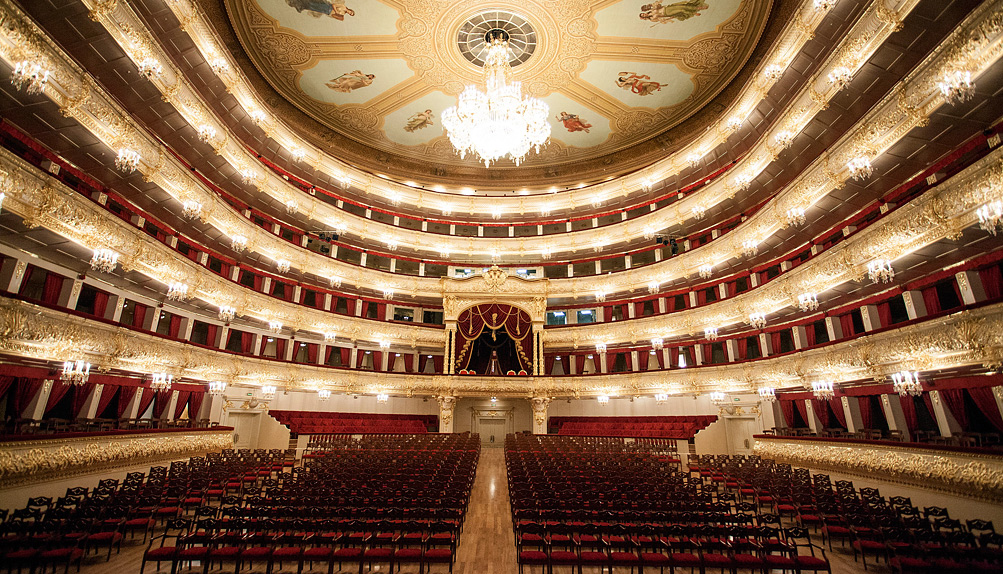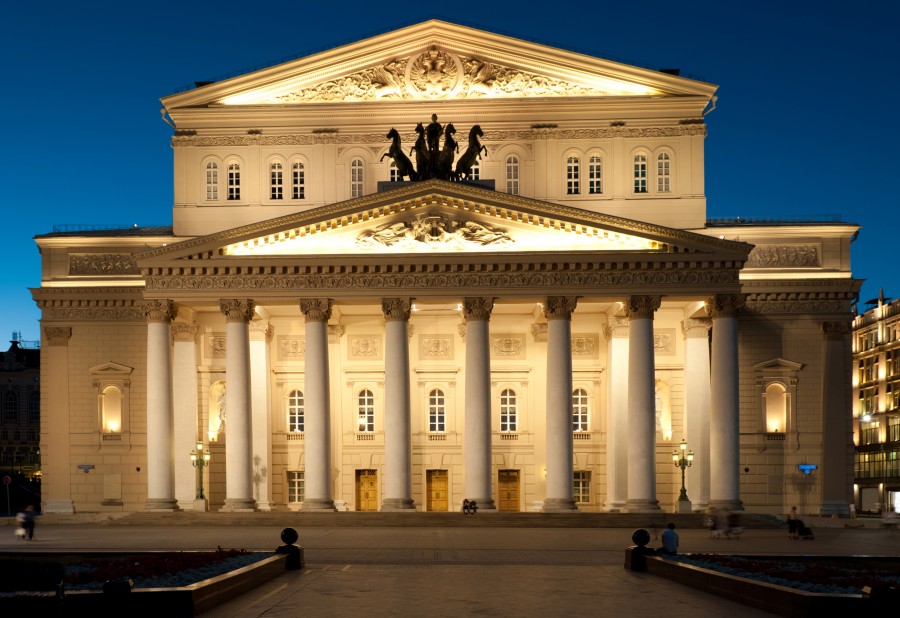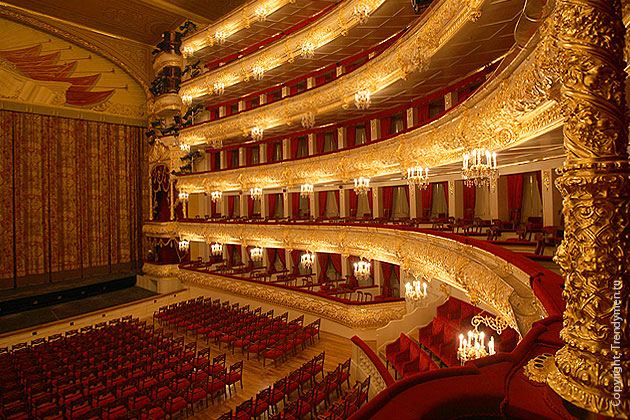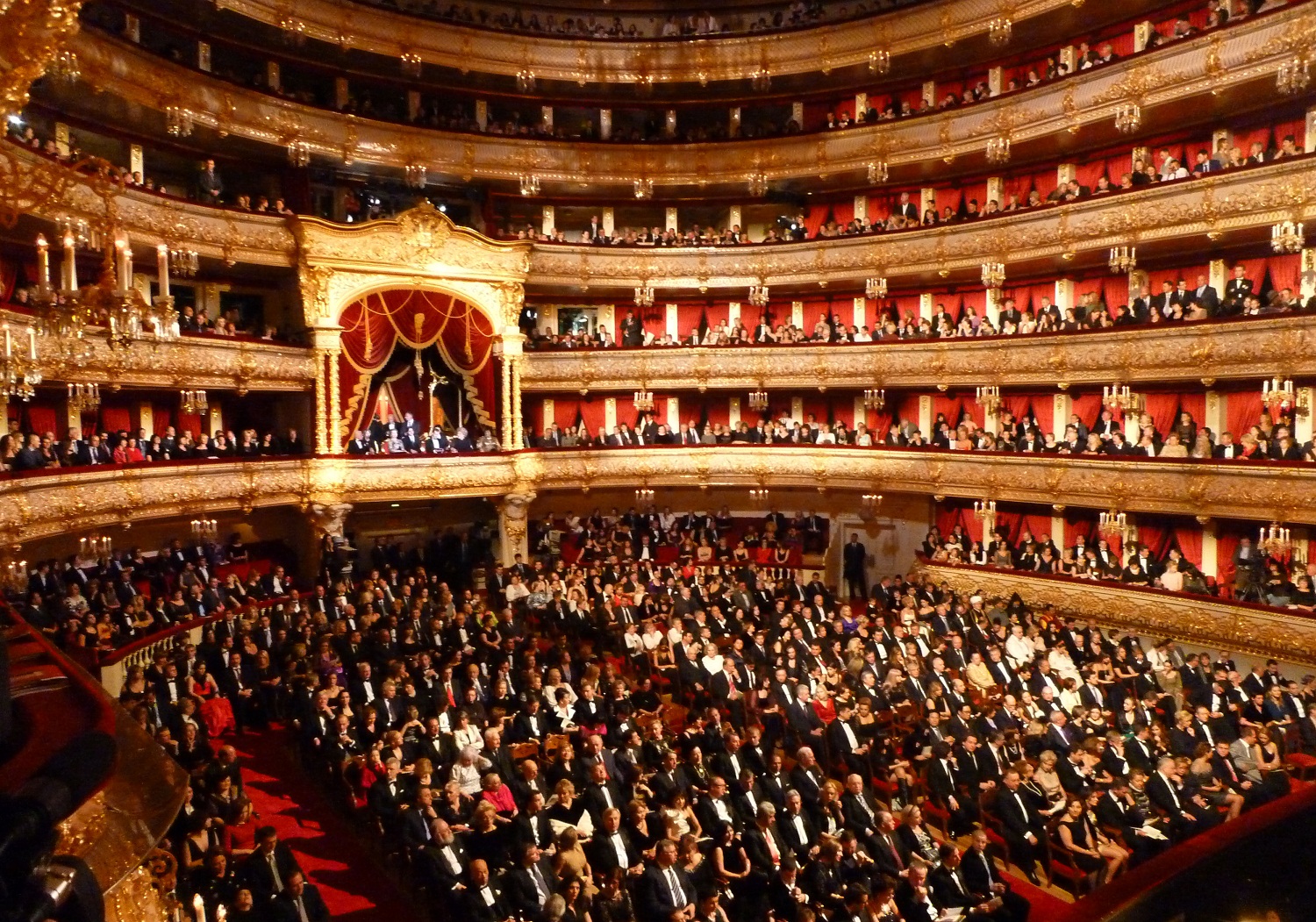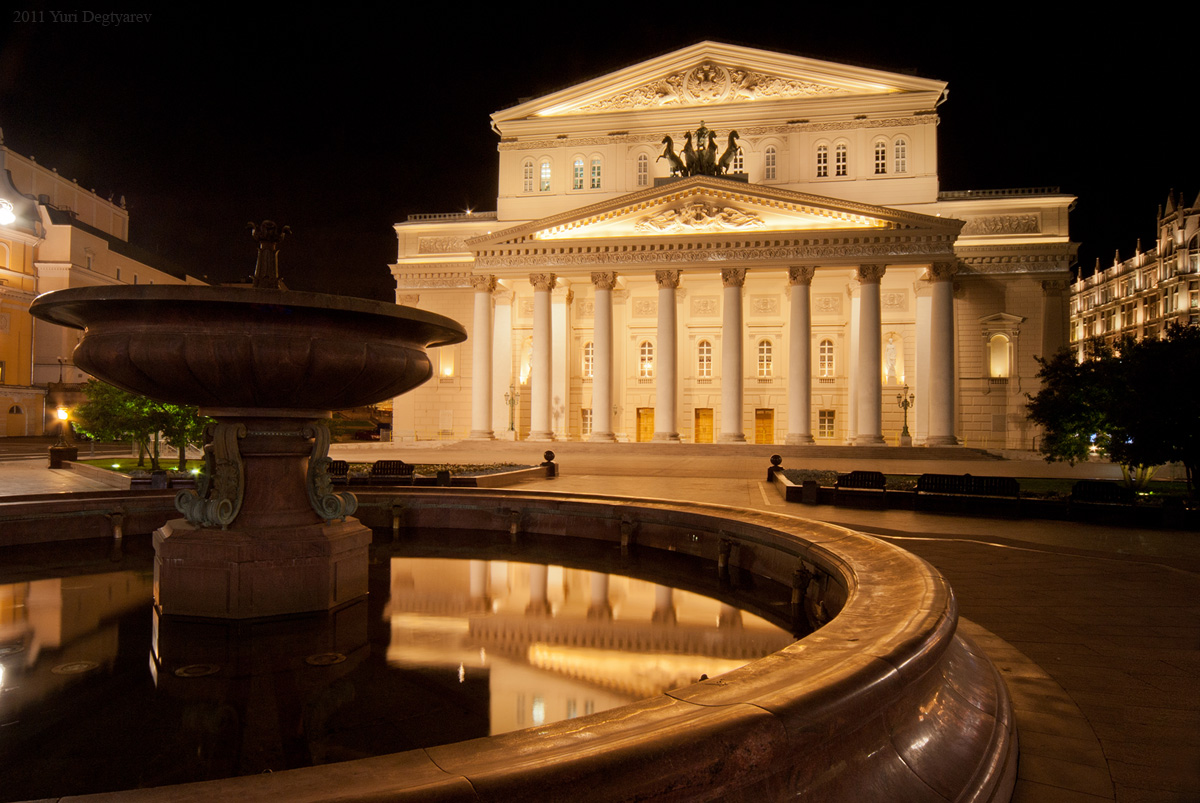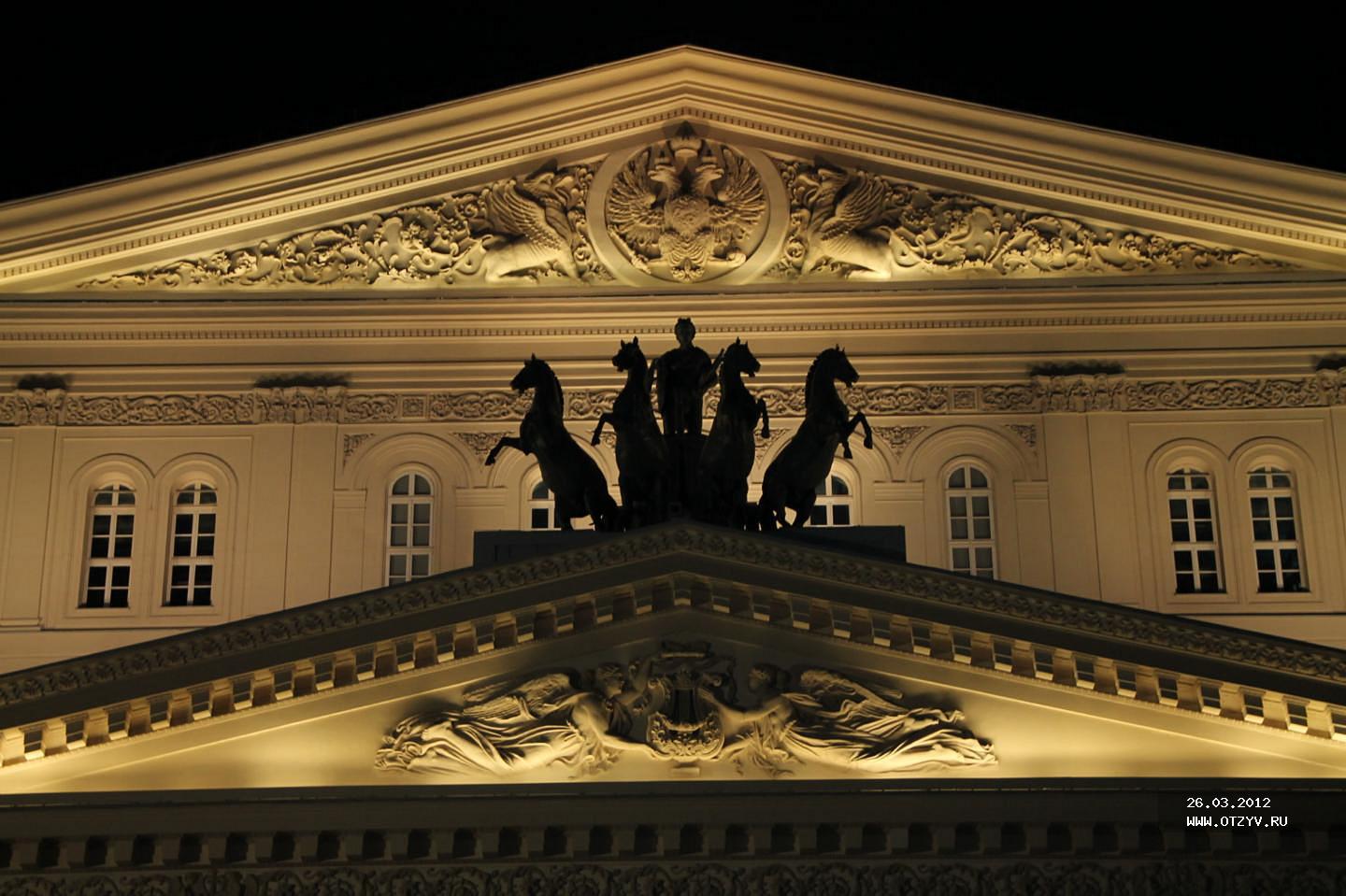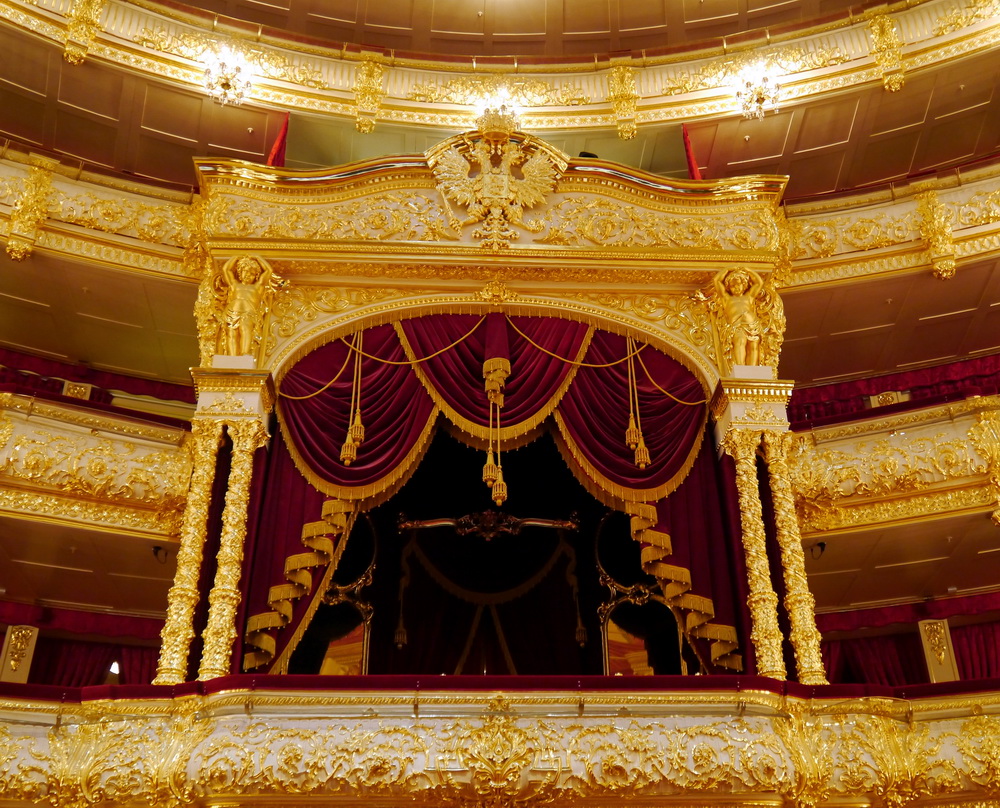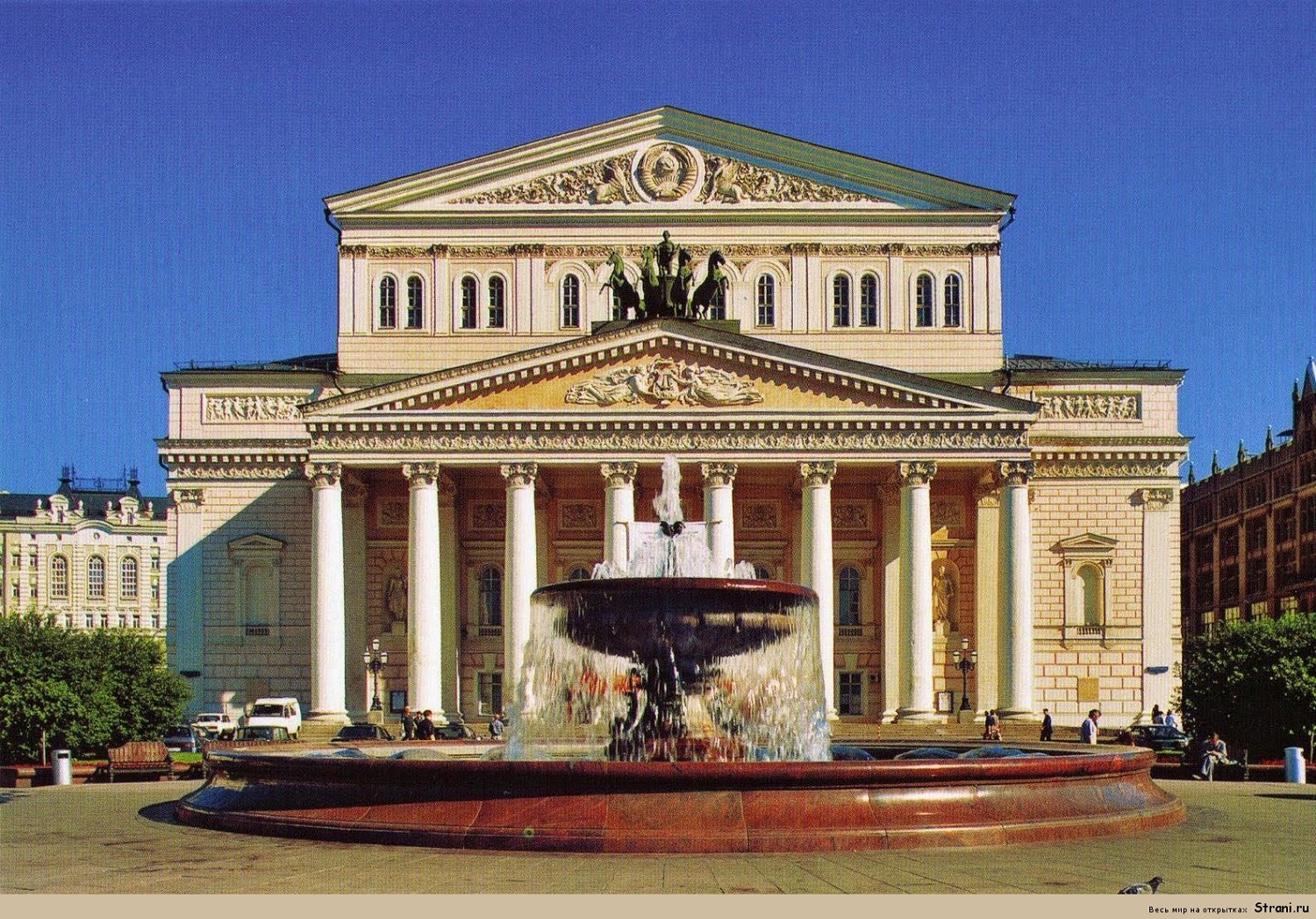The Bolshoi Theatre is a historic theatre in Moscow, Russia, designed by architect Joseph Bové, which holds performances of ballet and opera. The theatre's original name was the Imperial Bolshoi Theatre of Moscow, while the St. Petersburg Bolshoi Theatre (demolished in 1886), was called the Imperial Bolshoi Kamenny Theatre.
At that time, all Russian theatres were imperial property. Moscow and St. Petersburg each had only two theatres, one intended for opera and ballet (these were known as the Bolshoi Theatres), and one for plays (tragedies and comedies). Because opera and ballet were considered nobler than drama, the opera houses were named "Grand Theatres" ("Bolshoi" is Russian for "large" or "grand") and the drama theatres were called the "Smaller Theatre" ("Maly" is Russian for "small", "lesser", or "little").
The Bolshoi Ballet and Bolshoi Opera are amongst the oldest and most renowned ballet and opera companies in the world. It is by far the world's biggest ballet company, having more than 200 dancers. The theatre is the parent company of The Bolshoi Ballet Academy, a world-famous leading school of ballet. It has a branch at the Bolshoi Theatre School in Joinville, Brazil.
The main building of the theatre, rebuilt and renovated several times during its history, is a landmark of Moscow and Russia (its iconic neoclassical facade is depicted on the Russian 100-ruble banknote). On 28 October 2011, the Bolshoi was re-opened after an extensive six-year renovation. An official cost for the renovation is 21 billion rubles ($688 million). However, other Russian authorities claimed much more public money were spent. $1.1 billion according to Der Spiegel The renovation included restoring acoustics to the original quality (which had been lost during the Soviet Era), as well as restoring the original Imperial decor of the Bolshoi.
The company was founded on 17 March 1776 by Prince Pyotr Vasilyevich Urusov and Michael Maddox. Initially, it held performances in a private home, but it acquired the Petrovka Theatre and on 30 December 1780 it began producing plays and operas, thus establishing what was to become the Bolshoi Theatre. With the destruction by fire of the Petrovka Theatre on 8 October 1805, it was replaced on 13 April 1808 with the opening of New Arbat Imperial Theatre, but, as a consequence of the French invasion of Moscow in 1812, fire destroyed that theatre.
The current theatre was built on Theatre Square between 1821 and 1824. It was designed by architect Andrei Mikhailov (who had also built the nearby Maly Theatre in 1824) and it opened on 18 January 1825 as the Bolshoi Petrovsky Theatre with a performance of Fernando Sor's ballet, Cendrillon. Initially, it presented only Russian works, but foreign composers entered the repertoire around 1840.
Renovations in the 19th Century
In 1843 a large-scale reconstruction of the theatre took place using a design by A. Nikitin, but a fire in 1853 caused extensive damage and so a further reconstruction was carried out, by Alberto Cavos, son of the opera composer Catterino Cavos. On 20 August 1856 the Bolshoi Theatre reopened. Other repairs of the building took place in 1896.
20th Century
On 7 December 1919 the house was renamed the State Academic Bolshoi Theatre. Only a few days later, however, on 12 December, there was an unsuccessful attempt to shut the institution down entirely. Beethoven Hall opened on 18 February 1921. There was further reconstruction of the theatre between 1921 and 1923 under the auspices of Ivan Rerberg. Bomb damage occurred during World War II, but this was promptly repaired.
New Stage of 2002
A new stage for the Bolshoi Theatre, called the New Stage, went into service on 29 November 2002. It was built to the left of the theater's historic main stage. Together with auxiliary buildings — a restored 17th-century building, two rehearsal halls, and artists' recreation rooms — it forms a single theater complex, the Bolshoi Theatre of Russia. The new building is on a natural hill where, until recently, there were blocks of old houses with communal apartments.
Major Rebuilding and Renovation (2005–2011)
From July 2005 to October 2011 the theatre was closed for restoration. It had undergone many renovations in its time, but none as major as this. The building, whose architecture combines three different styles, was damaged and a quick renovation seemed to be necessary.
Repairs were initially due to cost 15 billion rubles ($610 million) but engineers found that more than 75% of the structure was unstable, and as a result the cost estimate jumped to 25.5 billion rubles (app. $850 million). At the completion of the work, however, it was announced that only 21 billion rubles ($688 mil) had been spent. According to The Moscow Times, the true cost may have been double that,[3] and Der Spiegel quotes a figure of $1.1 billion. The rebuilding and renovation was funded entirely by the federal government.
During the long period of reconstruction, the company continued to mount productions, with performances held on the New Stage and on the stage of the Great Kremlin Palace.
The renovation included an improvement in acoustics, to attempt to replicate the sound believed to have existed in pre-Soviet times, and the restoration of the original Imperial decor. The building's foundation and brickwork were thoroughly reset. Inside, the entire space was stripped from the bottom up. The 19th-century wooden fixtures, silver stage curtain and French-made red velvet banquettes were removed for repair in specialist workshops. Outside, on the top of the facade, the double-headed eagle of the original Russian coat of arms was installed in the place where the Soviet hammer and sickle had been mounted for decades.
Finally, on 28 October 2011, the Bolshoi Theatre re-opened with a concert featuring international artists and the ballet and opera companies. The first staged opera, Ruslan and Lyudmila, followed soon after.




